Early Postcards Of The Lion That Started A Zoo
By Christopher Moor - August 28, 2020
King Dick ruled Wellington Zoo in New Zealand for 14 years. The yearling lion king was the first of the animals to arrive at Newtown Park, taking up residence in June 1906, a few days before the death of Premier Richard John Seddon. He was named after Seddon, receiving the statesmans nickname of King Dick. Seddon, a man of leonine qualities, led the government that granted New Zealand women the vote in 1893 and introduced means tested old age pensions for those age 65 and over in 1898, two social reforms that were world firsts. Dick was one year old when gifted to Wellington city by Bostock and Wombwells Circus and Menagerie. He was born in South Africa on Feb. 28, 1905, and raised by Marco, a lion-tamer at Wirths Circus. King Dick was among the most beloved animals in the city during his lifetime. Plans to mate Dick with a young lioness fell through in 1909. The zoo returned her to Wirths Circus. A new two-compartment lion house was under construction and was not ready yet for her occupancy. Early in 1911, Mary, another lioness, joined King Dick in his enclosure. They watched one another through the bars of their cages, deliberately kept apart for a few days in case they mauled each other. Soon after the divider was removed, the pair showed they got along very well. Mary gave birth to two cubs, George and Maud, in February 1913. George would die from pneumonia in June 1914. Twin sister Maud was mated with Briton, a lion loaned to the zoo, and had four cubs by him in 1915. Her mother, Mary, had also been on loan to the zoo, and seemed set for a return to Wirths after giving birth to George and Maud. Wellingtonians raised 100 ($200) to purchase her from the circus and keep their favorite animal family together. Sadly, Dick was euthanised at the age of 15 years on Dec. 18, 1920, after he had lost the use of his rear legs. His body went to a taxidermist, where he was mounted and stuffed for display at the Newtown Museum. Dicks mounted form then went into the collection of the Dominion Museum, now the Museum of Te Papa Tongarewa (Te Papa) after the Newtown Museums closure in the 1930s. The mounted King Dick is now on loan from Te Papa to the Wellington Museum, where he can be seen in The Attic (third floor) in a display case he shares with Rusty (1977-97), another lion that lived most of his life at Wellington Zoo. King Dick was featured on several postcards in his lifetime. Some are now extremely rare, produced for sale in a country with a population of roughly 1.1 million people during the early years of the 20th century. An atypical example amongst the landscapes is a portrait-style card of a sitting Dick photographed and published by Wellingtonian Harold Plimmer, ca. 1909. Tanner Bros had been the most prolific publishers of King Dick-theme postcards. With an office in London and postcards printed in Saxony (Germany) pre-WWI, Tanners publications appear to have been sold outside of New Zealand, as King Dick postcards were sent to loved ones by Allied POWs captured by the Germans during the first world war. The oldest postcard discovered while researching this article was mailed in 1907. A young King Dick is shown facing out from behind the bars of his cage with the information; MSB has written to Mifs (Miss) Wilson of Dunedin, there is a talk of Wellington establishing a zoo. There are no manufacturers details appearing on the card. A 1909 postcard, Whats Up from the Gordon Real Photo Series, no. 887, is an image by Ernest de Tourret, a Whangarei photographer. He has not recorded Dicks handsomeness as well as McClymont does in the ca. 1909 photos he published as postcards M315 and M316. Alistair Robb, in his 2009 catalogue of the Postcards of Wonderful Wellington, says M315 and M315 are photographed and published by McClymont, not Zak (Joseph Zachariah), a Wellington photographer, as previously attributed. Arguably the most frequently seen postcard image of King Dick today is from a photo by S C (Sydney Charles) Smith. Tanner Bros featured the shot of Dick standing in front of a large ball on a colored Maoriland series postcard (no. 317) from ca. 1913. The same photo was used on an oval framed sepia card and a green postcard with a rectangular frame. Printing these postcards in the German state of Saxony would have ended after the declaration of WWI on July 28, 1914. Tanners no. 96 has King Dick and his mate Mary on a framed sepia card from the Maoriland series, again printed in Saxony. A glossy brown, borderless version has what looks like Post Card from a rubber stamp impression on the reverse side, indicating printing during WWI. The same reverse treatment appears on Tanners unnumbered Christmas Wishes postcard of the Dick and Mary photo. Dinner is late is King Dick in full cry on Tanners postcard no. 98. The photo featured on a British printing for Tanner Bros of a Christmas card with verse, no. X 63, and on its no. 98.02, where the roaring Dicks image is now captioned, What about my Christmas Dinner. Alistair Robb says Tanner postcards 96, 98 and 99, Dick sitting by a rock, are photos by McClymont, as are nos. 418 of Dick lying down and X84/418, a Friendships Greeting Card with a Christmas message. King Dick postcard prices average $9-$13 each, based on those seen on the marketplace after New Zealands Covid-19 lockdown ended.




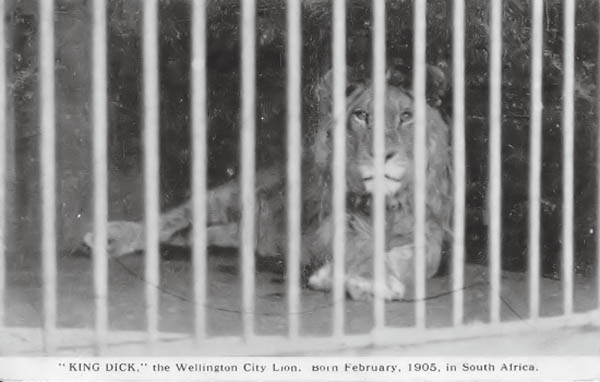
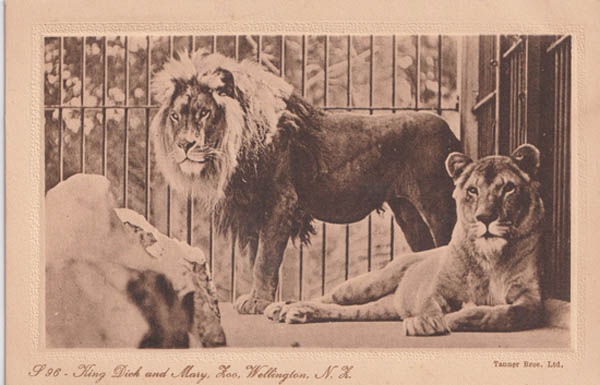

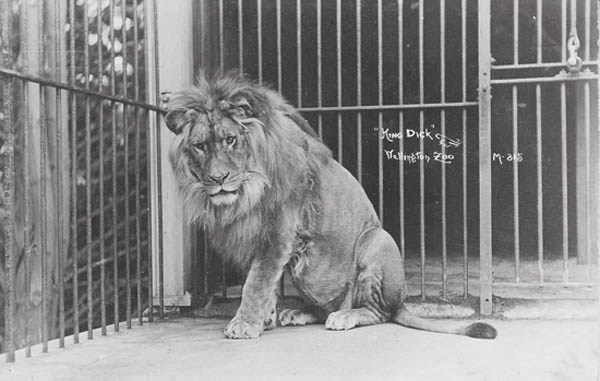
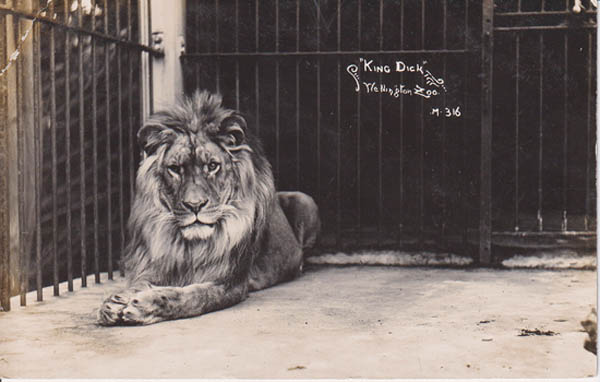


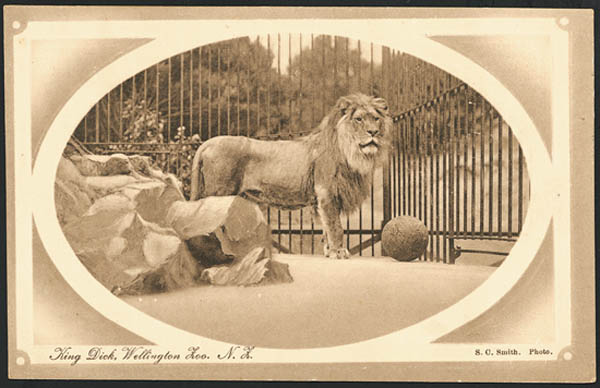
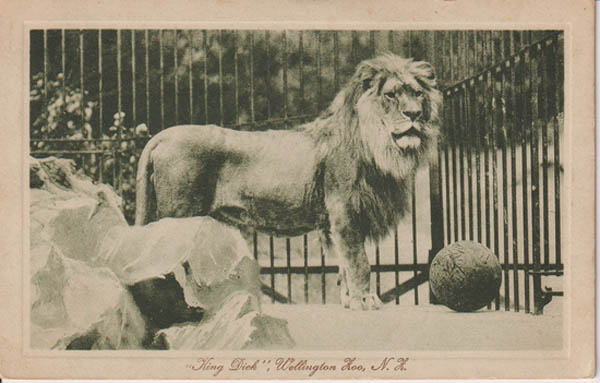
SHARE
PRINT